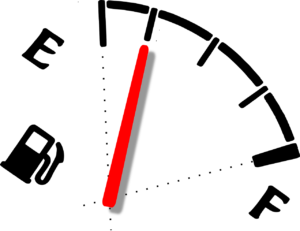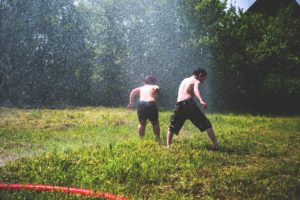Every living creature on this planet survives by avoiding threats and gravitating towards rewards. The driving force is staying alive and survival of the species. This is accomplished by the nervous system taking in data from the environment through each body sensor and analyzing it every millisecond. All of the senses count and are in constant competition. The highest concentration of receptors is in the eyes in the form of rods and cones and the lowest is in the skin, which has several different types.
Reality
The first step in this process is for your brain to define reality. There is nothing inherent in any receptor that defines anything. A cat is a cat because your brain has unscrambled visual signals and has determined the nature of this animal. A cat’s meow is analyzed from the auditory receptors and the signals travel to a different area of the brain. Your nervous system then has to link these two inputs together to associate this sound as one that emanates from a cat. This complex sequence occurs for every aspect of your reality. Whatever you call “real” is only your individual interpretation of the world. Although there are close similarities, no one sees even one object exactly the same.
Next, all of your senses keep combining input to determine other properties of objects, such as hot, cold, smooth, red, yellow, loud, bright, etc. Other people are a basic part of this identification process. Your infant has to first recognize you as a human before other layers are added.
Identity
At some point, a child recognizes that he or she is separate from others and then realizes that the closeness of the bond with mother/ father hopefully not only represents a haven of safety, but also the link to life itself. Any threat to this connection is unacceptable. Identification of self, relationship to others, social awareness, ideas, concepts and abstract thinking all will progressively follow with age.

It is only so if I say it’s so
The reason why I am presenting the obvious, is to make the point that nothing exists without your brain gathering data, unscrambling it, and determining what is. (1) It is based on your prior programming. Somewhere in the midst of all of this, babies have to learn to survive on their own, which means that one basic function is determining what is and isn’t safe. However, that can’t happen until some sense of separation and definition of the world has happened. A newborn can’t determine that a hot stove is dangerous until it knows what a stove is. He or she can only instinctively pull away from too much heat but can’t know enough yet to avoid it in the future.
This is how every creature stays alive, with many species being able to care for themselves much more quickly than humans. The essence of this skill is avoiding danger and gravitating towards rewards. What drives this action? One of the main factors is the state of your body’s chemical makeup. If the brain has determined something or someone is a threat, it will compel you to take action to solve the problem.
Compelled
One of the responsibilities of the central nervous system is to maintain the delicate balance of the body’s chemistry. There are numerous chemicals to monitor. When there is a threat, hormones will be secreted that increase your chances of survival. Some of the core stress response hormones are adrenaline, noradrenaline, endorphins, histamines and cortisol. I won’t list the effects of each of these, but the net result is an increased capacity to flee from danger. Much of this is modulated through the autonomic nervous system, which also has many direct effects such as increased heart rate, rapid breathing, dilation of certain blood vessels and constriction of others.
All of these allow you to leap into action, but what compels you to do so? It is a feeling of dread that we call anxiety. It is so deep and uncomfortable that you have no choice but to take action. Once the threat is gone and the body is back in balance (homeostasis), you can go on with your life. Anxiety describes the cumulative sensation of a threat. It is symptom, not a diagnosis, disease, or disorder. Therefore, it isn’t treatable by primarily addressing it as the problem. Once you understand it is only a warning mechanism, you can address the root causes that are unique to you.

Seeking rewards
Conversely, survival also depends on engaging in behaviors that allow you to flourish and procreate. It is enjoyable to eat, quench your thirst, inhale a breath of fresh air, take a nap, empty a full bowel or bladder, make love and spend time with close friends and family. When you are lying in the sun or holding your newborn baby, your body is full of reward chemicals such as oxytocin (love drug), dopamine (rewards), serotonin (mood elevator) and GABA chemicals (anti-anxiety). Your heart rate is slower and your muscles are loose. What a great chemical bath. It isn’t as critical to survival to be in this state, and we aren’t urgently compelled to act. We aren’t avoiding an imminent threat. Many words encapsulate this scenario and I will choose, “relaxed.” Relaxed is a description of this state and also not a diagnosis, disorder or disease.
These shifts in your body’s balance occur by the millisecond. Disease does occur when this balance is disrupted by sustained levels of stress hormones. This data has been known for decades. (2)
“The Curse of Consciousness”
The universal problem of being human is what I call, “The Curse of Consciousness.” Recent neuroscience research has shown that threats in the form of unpleasant thoughts or concepts are processed in a similar area of the brain as physical threats with the same chemical response. (3) The “curse” is that none of us can escape our thoughts, so we are subjected to an endless stress chemical assault on our body. This translates into more than 30 physical symptoms and many disease states. These include autoimmune disorders and early death. (4, 5) However, the worst symptom is relentless anxiety. In my personal experience and working with thousands of patients in pain, the mental pain, manifested by anxiety, is beyond words, intolerable. It is the reason why the only description I could come with for this state of being was, “The Abyss.” It is the essence of human suffering and the additional physical symptoms are the final insult. It is a universal phenomenon, varying only in intensity and styles of coping – some much better than others.
Since this unconscious survival mechanism has been estimated to be a million times more powerful than your conscious brain, it isn’t responsive to rational interventions to manage or control it. The solution lies in the fact that this is an unsolvable problem. Without anxiety that is unpleasant enough so as to compel you take action, you wouldn’t survive. Neither would you or the human species survive without the drive to seek physiological rewards.
Solution principles
The first step is to understand the nature of anxiety, and it is simply feedback indicating the levels of your stress hormones. View it as the fuel gauge in your car. It simply lets you that you are being threatened, whether it is real or perceived. It doesn’t matter. But, you do have to allow yourself to feel it before you can deal with it.

Second, if anxiety is the measure of your body’s survival hormones, then the only way to decrease it is to lower them. This can be accomplished in two ways with each category requiring different tools:
- Directly through relaxation techniques
- Indirectly by lowering the reactivity of your brain to dampen the survival response. This is accomplished by stimulating your brain to rewire so the response to a threat results in a lower chemical surge and is of shorter duration. The term for this is, “neuroplasticity.” Your brain changes every second with new cells, connections and myelin.
By not wasting energy trying to treat or solve your anxiety, you now have the energy to pursue a new path with a remarkable surge in energy, life forces and creativity.
DOC is a framework
How is this accomplished? Learning tools to calm and rewire your nervous system is the core of the DOC (Direct your Own Care) project. These are approaches have been known for centuries and have been buried under the weight of modern information overload and pace of life. The DOC process is a framework for you to understand the nature of pain, your relevant issues and you can figure out your own version of a solution. The clarity will allow you to connect to your own capacity to heal by developing skills to auto-regulate your body’s chemistry from anxiety to relaxed. Consider anxiety as the fuel needed to take quick action and relaxation and is what we want for our baseline and cruising.
Success in learning to adjust your body’s chemical makeup is based on awareness and openness to learning so change can occur. It is remarkably simple and consistent. Join me in living your life in a manner that you could not conceive was possible – even better than before you were crushed by pain.

Is “relaxed” a diagnosis? No!! Is “anxious” a diagnosis? No!!!! To read your body’s chemistry gauge, you first have to allow yourself to feel.
References:
- Feldman Barrett, Lisa. How Emotions are Made. Houghton Mifflin Harcourt Publishing Company. New York, New York, 2017.
- Rahe R, et al. “Social stress and illness onset.” J Psychosomatic Research (1964); 8: 35.
- Eisenberger N. “The neural bases of social pain: Evidence for shared representations with physical pain.” Psychosom Med (2012); 74: 126-135.
- Torrance N, et al. Severe chronic pain is associated with increased 10-year mortality: a cohort record linkage study. Eur J Pain (2010);14:380-386.
- Song, H, et al. Association of stress-related disorders with subsequent autoimmune disease. JAMA (2018); 319: 2388-2400.
